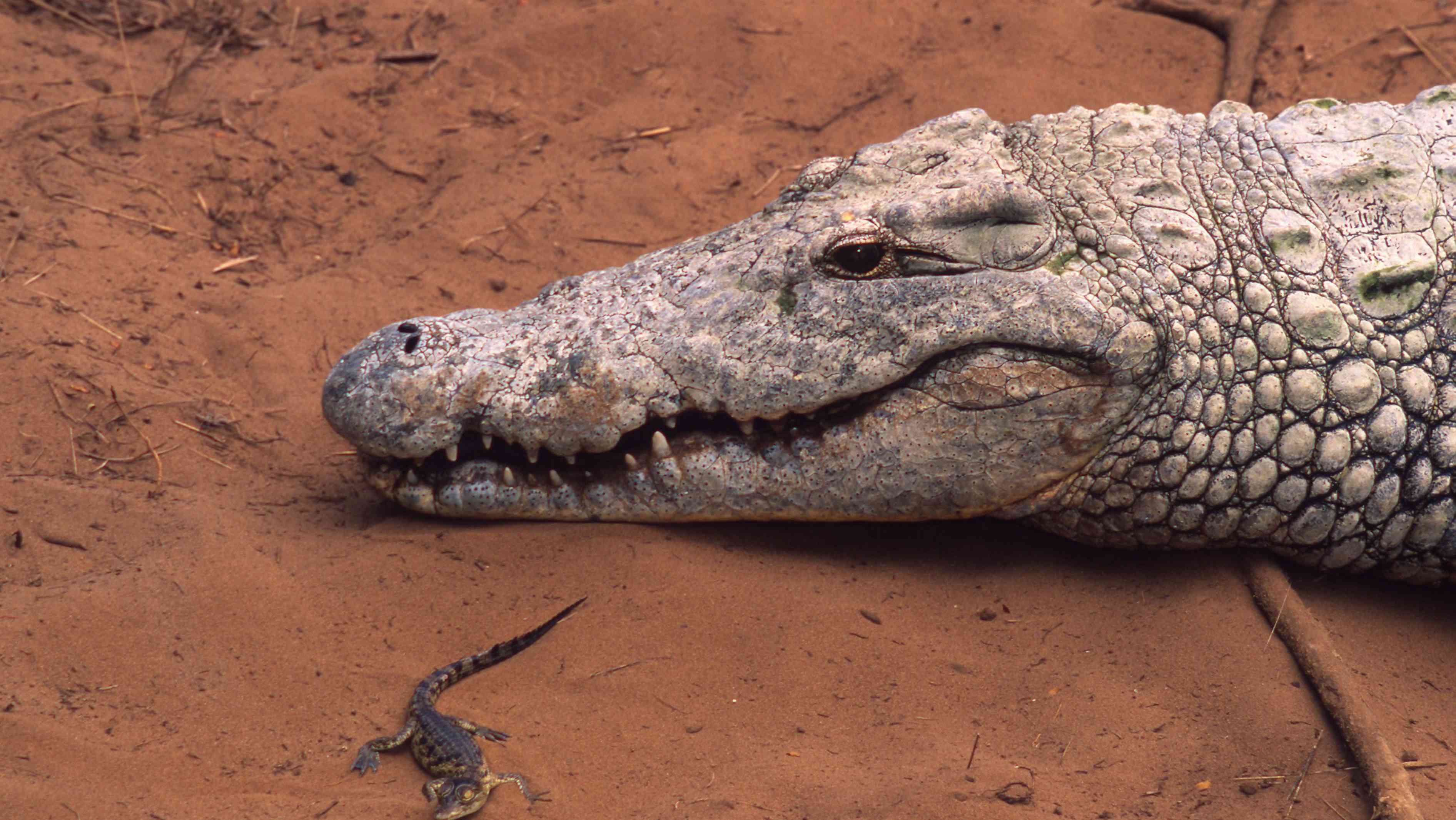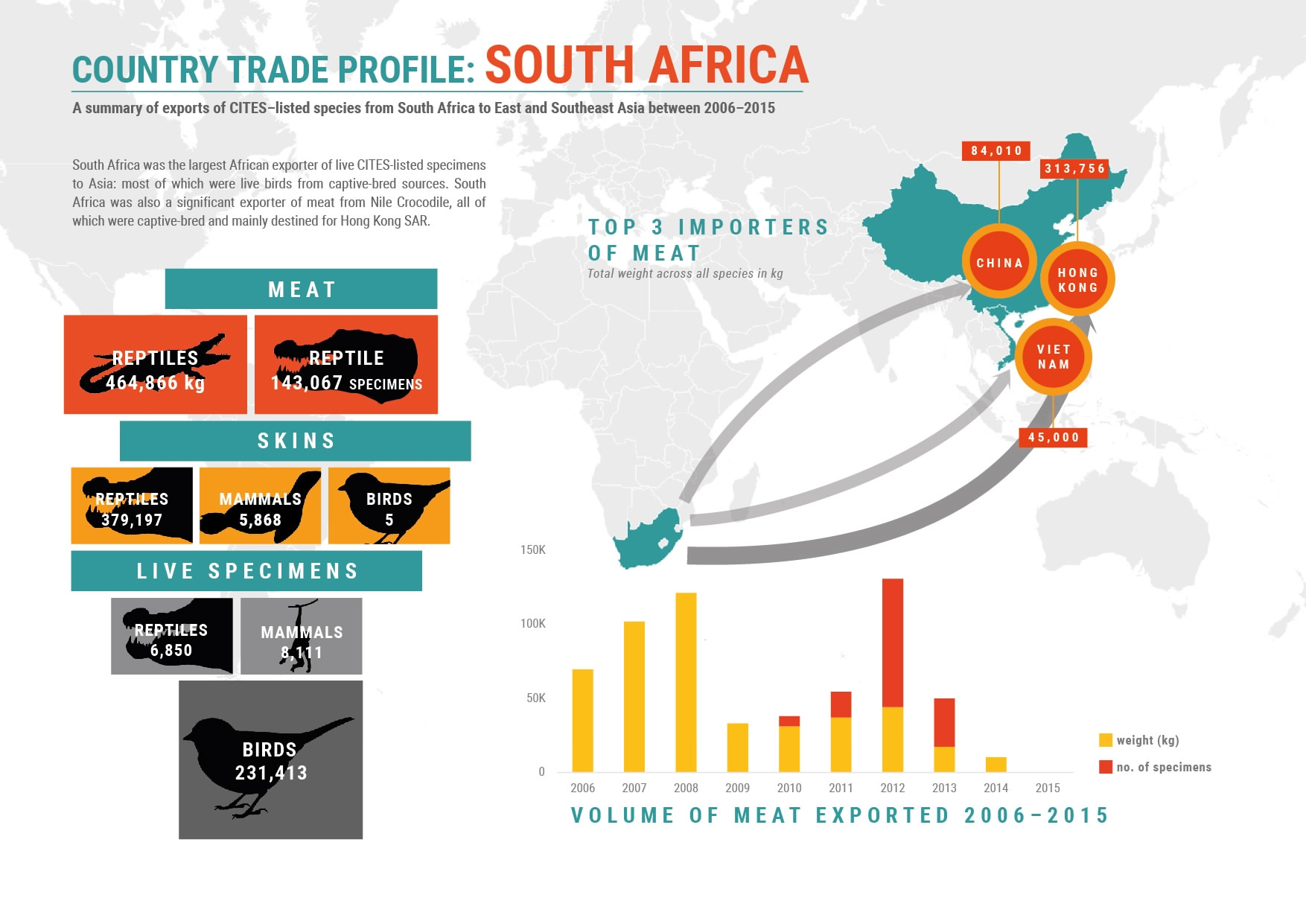
Tech & Sci
18:10, 05-Mar-2018
TRAFFIC report documents booming Africa-Asia trade in exotic animals
Alok Gupta

The wildlife trade from Africa to Asian countries is not limited to iconic animals like elephants and rhinos.
Apart from the endangered animals, more than 1.3 million live animals and plants, 1.5 million skins and 2,000 tons of meat from species listed in the Convention of International Trade in Endangered Species (CITES) were legally exported from 41 African countries to East and Southeast Asia from 2006 to 2015, claimed a report released by wildlife monitor TRAFFIC on Monday.
The legal wildlife trade is witnessing an unprecedented rise in the export of live animals. More than 1.3 million live animals were exported in the years covered by the report.
Trade in the leopard tortoise, ball python and African spurred tortoise grew most, from 8,488 live individuals in 2006 to 78,295 in 2015. These three species accounted for 68 percent of all live reptile exports in 2015, the report maintained.
While South Africa is the largest exporter of birds, plants and mammals, Madagascar is the only exporter of live amphibians to Asia. The high demand for live wild animals has spurred the captive breeding of animals, to the extent that captive-bred wildlife trade increased from 42 percent in 2006 to a peak of 66 percent in 2013.

South Africa exports the largest number of mammals, birds and plants to Asian countries. /TRAFFIC Infograph
South Africa exports the largest number of mammals, birds and plants to Asian countries. /TRAFFIC Infograph
Exports of protected animal skins also marginally increased from 2006. The proportion of skins procured from captive sources peaked at 64 percent in 2012 but declined to 24 percent in 2015. Researchers said that the skin trade is heavily focused on the Nile crocodile.
Nearly 91 percent of skin exports involved Nile crocodile skin, and most of these skins came from captive-bred or ranched animals. Zimbabwe emerged as the largest exporter of reptile skins, followed by Zambia, and major clients were from 16 East and Southeast Asian countries, according to the report.
Nile crocodiles, European eels and Cape fur seals also dominated the market for meat consumption. Captive-bred meat dominated the market, making up 93 percent of the demand in 2011 and 2012. But the export of European eels suddenly dropped to zero in 2015.
S. Korea imported the most European eel meat followed by Hong Kong, which was also the largest importer of Nile crocodile meat.
Altogether, a total of 1,393,003 live individuals, 1,558,794 skins and 2,009,377 kg of meat took the journey from Africa to Asia. Apart from wild animals, plants were exported as 15 different commodities, most significantly powder, extract, logs and live plants.
Exports of individual live plants from Africa remained relatively stable at an annual average of 8,629 between 2006 and 2014, before jumping to 60,344 in 2015.
Willow Outhwaite and Lauren Brown, the authors of the report, said all the focus in recent years on the illegal trade and the devastating onslaught on elephants and rhinos has meant comparatively little attention has been given to legal wildlife trade from the continent.
“Until now, the legal wildlife trade between Africa and Asia has been largely overlooked but TRAFFIC’s new study aims to fill in some of the blanks in our understanding of this vast, complex and legitimate intercontinental exchange of natural resources,” Outhwaite said.

SITEMAP
Copyright © 2018 CGTN. Beijing ICP prepared NO.16065310-3
Copyright © 2018 CGTN. Beijing ICP prepared NO.16065310-3